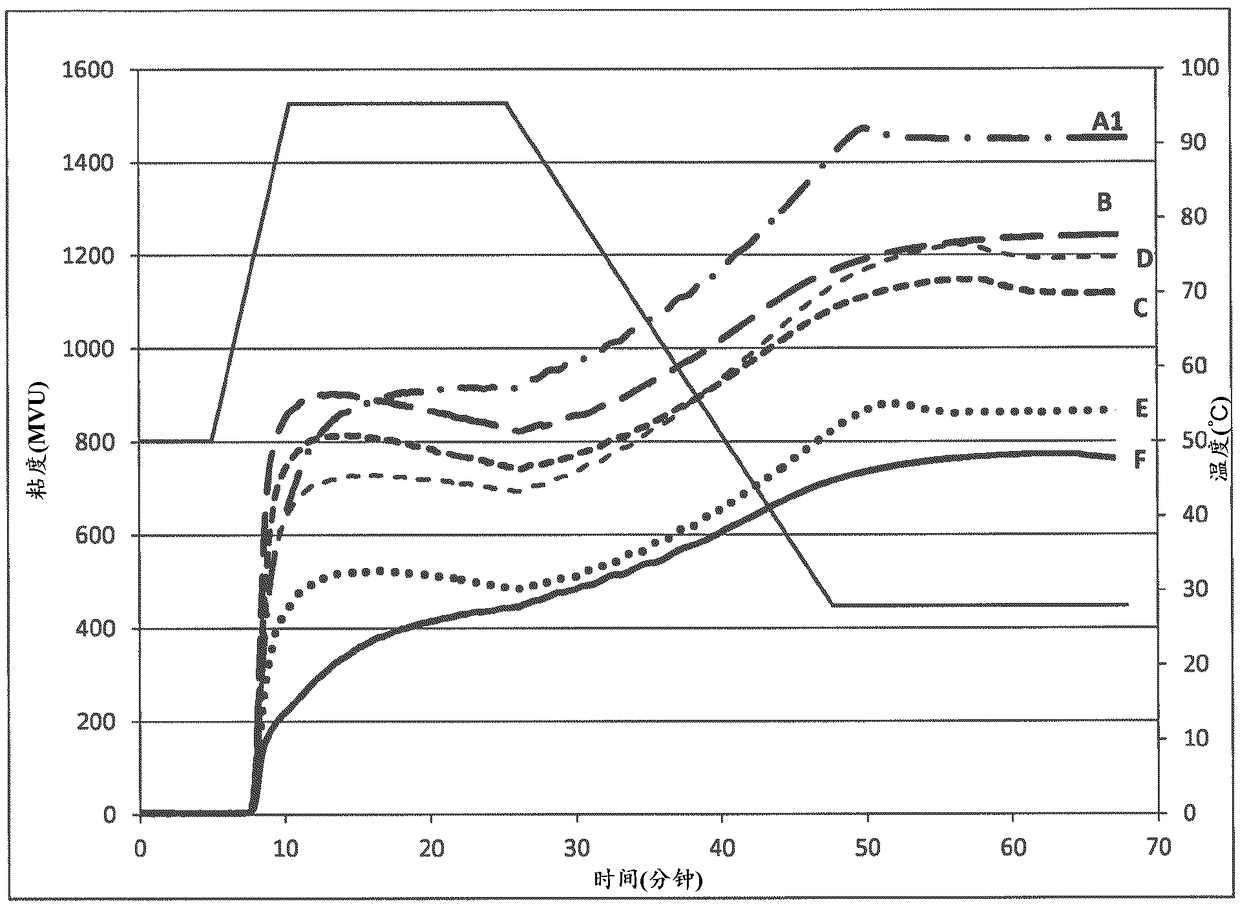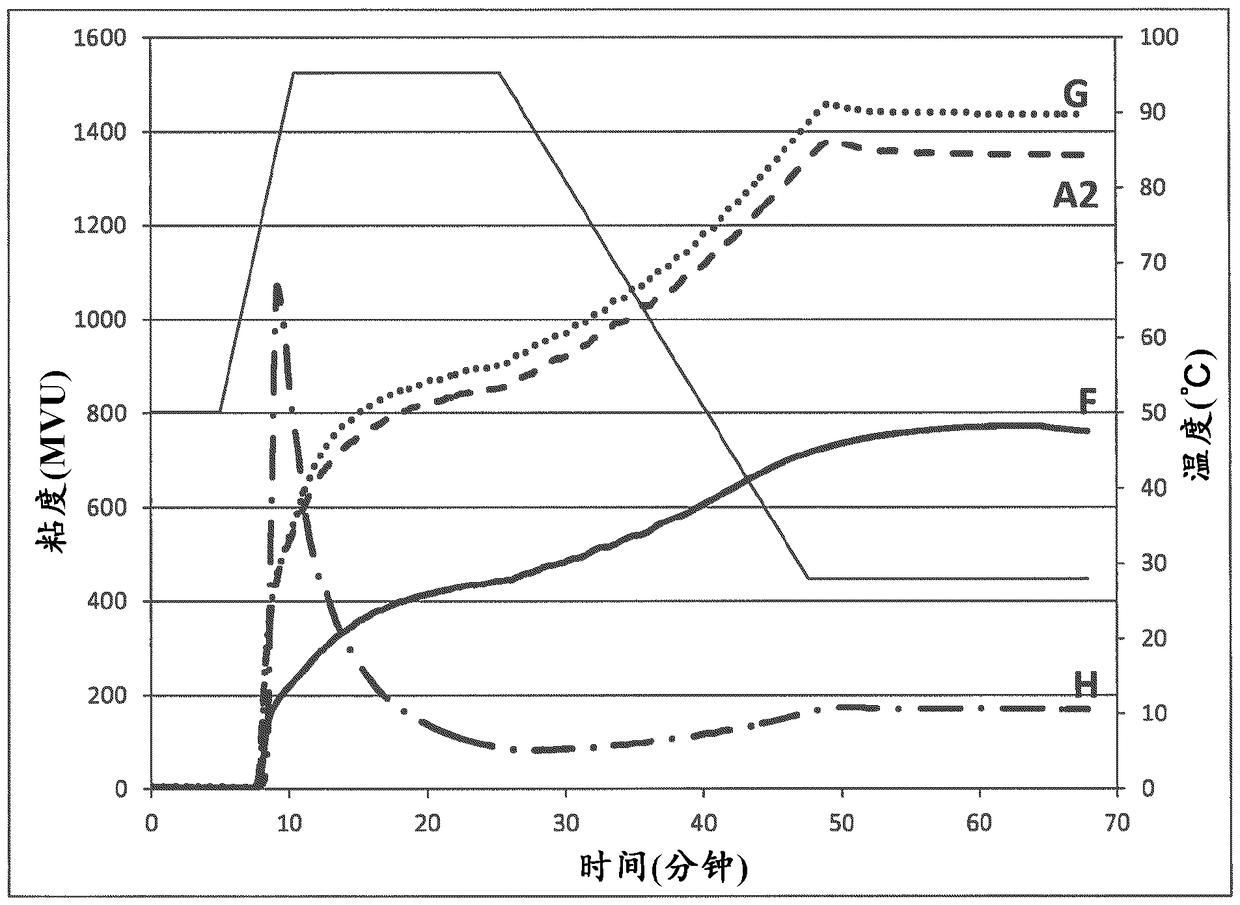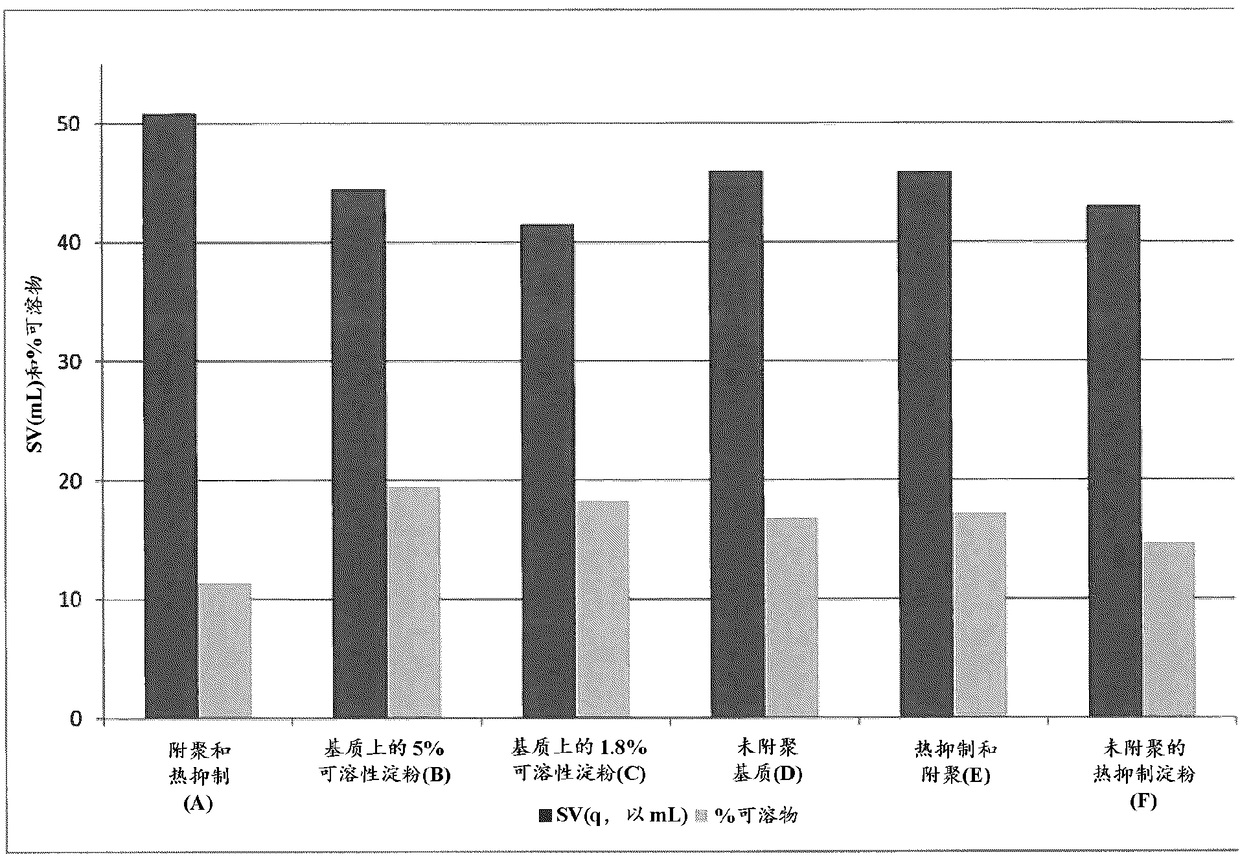Method of making agglomerated and thermally inhibited starch
A heat-inhibited, starch-based technology, applied in the field of heat-inhibited starch, viscosity modifier, can solve the problem of negligible viscosity improvement
- Summary
- Abstract
- Description
- Claims
- Application Information
AI Technical Summary
Problems solved by technology
Method used
Image
Examples
Embodiment 1
[0128] Embodiment 1-laboratory scale production
[0129] Starch samples with various levels of starch binder and various amounts of buffer in the starch granules were prepared according to the recipe in Table 1 below.
[0130] Table 1 - Sample Recipe and Process
[0131] sample
[0132] 1 The starch binder was a commercially available cold water-swellable starch derived from waxy corn (ULTRA-SPERSE®, starch from Ingredion Incorporated, Westchester, Illinois).
[0133] 2 The starch granules were waxy corn starch obtained from Ingredion Incorporated, Westchester, Illinois.
[0134] 3 Heat-inhibited starch granules of the comparative unagglomerated control.
[0135] Each sample was prepared based on the formulation and process provided in Table 1 to demonstrate their effect on viscosity and to compare heat-inhibited agglomerated starch with non-agglomerated heat-inhibited starch (ie, samples D and F). Samples were prepared as follows.
[0136] Sample Al was prepa...
Embodiment 2
[0149] Example 2 - Pilot Scale Production
[0150] Starch samples with 5% starch binder (based on the weight of the starch granules) and various amounts of buffer in the starch binder or starch granules were prepared according to the recipe in Table 2 below.
[0151] Table 2 - Sample Recipe and Process
[0152] sample
starch binder 1 Amount (%w / w based on starch granules)
Amount of buffer in starch binder (% w / w based on starch granules)
starch granules 2 Amount of buffer in medium (%w / w based on starch granules)
Process / Remarks
A2
5.00
1.00
0.00
agglomerated, then thermally inhibited
F 3
0.00
0.00
N / A
business reference
G
5.00
0.00
2.00
agglomerated, then thermally inhibited
H 4
0.00
0.00
0.00
Starch Granules Reference
[0153] 1 The starch binder was a commercially available cold water-swellable starch derived from waxy corn (ULTRA-SPERSE®, starch from Ingredio...
PUM
 Login to View More
Login to View More Abstract
Description
Claims
Application Information
 Login to View More
Login to View More - Generate Ideas
- Intellectual Property
- Life Sciences
- Materials
- Tech Scout
- Unparalleled Data Quality
- Higher Quality Content
- 60% Fewer Hallucinations
Browse by: Latest US Patents, China's latest patents, Technical Efficacy Thesaurus, Application Domain, Technology Topic, Popular Technical Reports.
© 2025 PatSnap. All rights reserved.Legal|Privacy policy|Modern Slavery Act Transparency Statement|Sitemap|About US| Contact US: help@patsnap.com



